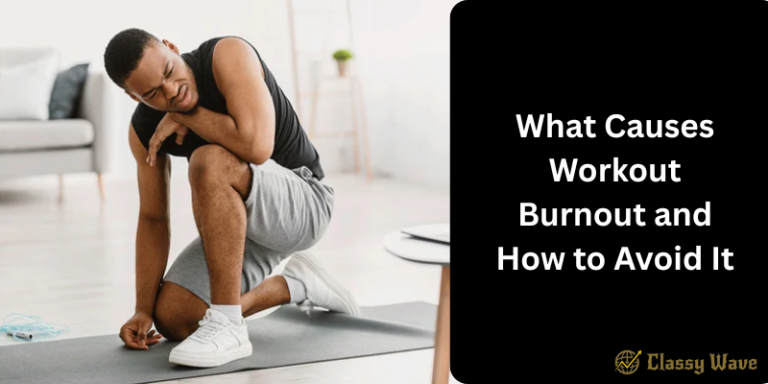How to get Abs Fast for 13 years old? safe and effective ways
Embarking on the quest for a toned and defined midsection at the age of 13 is a commendable decision. Developing strong core muscles not only enhances physical appearance but also contributes to overall health and well-being. In this guide, we’ll explore effective strategies to help 13-year-olds achieve enviable abs quickly and safely.
Understanding the Basics of Core Training
Before diving into specific exercises, it’s crucial to understand the anatomy of the core. The core encompasses more than just the six-pack muscles; it includes the obliques, transverse abdominis, and lower back. Comprehensive core training involves exercises that target all these muscle groups, promoting a balanced and strong midsection.
Balanced Nutrition for Abs
No amount of exercise can compensate for a poor diet. Nutrition plays a pivotal role in revealing the abdominal muscles hidden beneath the surface. Opt for a well-rounded diet rich in lean proteins, whole grains, fruits, and vegetables. Stay hydrated and limit the intake of sugary snacks and processed foods. Remember, a healthy diet not only fuels your workouts but also aids in the recovery and growth of muscles.
Effective Ab Exercises for 13-Year-Olds
Now, let’s delve into specific exercises that will target and strengthen your core. Planks, bicycle crunches, leg raises, and mountain climbers are excellent choices. Ensure proper form and start with a manageable number of repetitions, gradually increasing as your strength improves. Consistency is key; aim for at least three core workouts per week to see noticeable results.
The Importance of Cardiovascular Exercise
In addition to targeted core exercises, incorporating cardiovascular workouts is essential for burning excess fat and revealing your abdominal muscles. Activities like running, cycling, and swimming boost overall calorie expenditure, contributing to a leaner physique. Aim for at least 150 minutes of moderate-intensity cardio each week to enhance your metabolism and expedite the process of achieving visible abs.
Rest and Recovery: The Unsung Heroes
Don’t underestimate the significance of rest and recovery. Muscles grow during periods of rest, so ensure you get adequate sleep each night. Overtraining can lead to injury and hinder progress. Listen to your body and incorporate rest days into your routine. Consider activities like yoga or stretching to improve flexibility and reduce muscle soreness, allowing you to maintain consistency in your training.
Building Healthy Habits for a Lifetime
Developing six-pack abs is not just a short-term goal; it’s about cultivating a healthy lifestyle. Embrace habits such as staying active, choosing nutrient-dense foods, and maintaining proper hydration. These habits will not only help you achieve your desired physique but will also set the foundation for a lifetime of health and wellness.
Age-Appropriate Strength Training: Laying the Foundation
While core exercises are crucial, introducing age-appropriate strength training can provide a solid foundation for muscle development. Begin with bodyweight exercises like squats and push-ups, gradually incorporating light weights as you progress. Consult with a fitness professional or your parents to ensure you’re using the proper form and not compromising your growth.
Mindful Eating: The Role of Portion Control
Balanced nutrition extends beyond food choices; portion control is equally vital. Be mindful of serving sizes to avoid overeating. Eating smaller, more frequent meals throughout the day can help regulate metabolism and provide a steady supply of energy for both daily activities and workouts.
Hydration Habits: Fueling Your Fitness
Staying hydrated is often overlooked but is a critical aspect of achieving visible abs. Water aids digestion, supports metabolism, and helps maintain overall health. Aim to drink at least eight glasses of water a day and consider incorporating hydrating foods like watermelon and cucumber into your diet.
Goal Setting and Tracking Progress
Set realistic, achievable goals for your abdominal journey. Whether it’s increasing the number of crunches or running longer distances, having clear objectives keeps you motivated. Regularly track your progress through photos or a fitness journal. Celebrate small victories along the way to stay inspired and focused on your ultimate goal.
Bodyweight Cardio Alternatives: Fun and Effective Workouts
If traditional cardio exercises don’t appeal to you, explore bodyweight alternatives. High-intensity interval training (HIIT) routines, dance workouts, or martial arts can be engaging and effective in burning calories. Experiment with different activities to find what you enjoy most, ensuring that you stay committed to your cardiovascular fitness routine.
Peer Support and Positive Encouragement
Share your fitness journey with friends or family who can provide support and encouragement. Having a workout buddy can make exercising more enjoyable and help you stay accountable. Surround yourself with positivity, as a supportive environment plays a crucial role in maintaining motivation during your pursuit of well-defined abs.
Dealing with Challenges: Overcoming Plateaus
Expect challenges along the way, including plateaus where progress may seem slow. Understand that these phases are normal. Reevaluate your workout routine, consider adjusting your diet, and explore new exercises to break through plateaus and keep your fitness journey dynamic and rewarding.
Expert Advice: Seeking Guidance Safely
If uncertain about your fitness routine or experiencing discomfort, seek guidance from fitness professionals, coaches, or your school’s physical education teacher. Safety is paramount, and consulting with experts ensures that you’re following a program suitable for your age and fitness level.
Conclusion:
To achieve fast and safe abs at 13, focus on balanced nutrition, including lean proteins and veggies. Engage in core exercises like planks and leg raises, complemented by age-appropriate strength training. Incorporate cardio activities for fat burn, prioritize rest for muscle recovery, and adopt lifelong healthy habits. Consult fitness professionals for guidance, set realistic goals, and maintain peer support. Embrace challenges, adjust routines, and celebrate progress in this holistic approach to building a strong, healthy core.
FAQs
Question: Can 13-year-olds do intense ab workouts?
Answer: Yes, but start with age-appropriate exercises like planks and crunches, gradually increasing intensity under supervision.
Question: Is diet crucial for teen abs?
Answer: Absolutely. Prioritize a balanced diet with lean proteins, fruits, and veggies for optimal muscle development and fat reduction.
Question: Are there fun workouts for teens?
Answer: Yes, try bodyweight activities like dancing or martial arts. Make cardio enjoyable to sustain interest and motivation.
Question: How many times a week should teens train abs?
Answer: Aim for at least three sessions per week, allowing rest days for muscle recovery and overall well-being.
Question: Can 13-year-olds use weights for ab exercises?
Answer: Start with bodyweight exercises and consult a professional before incorporating weights to ensure safe and effective training.







